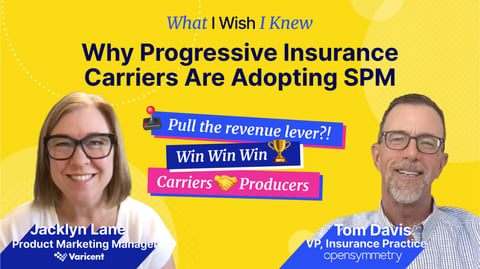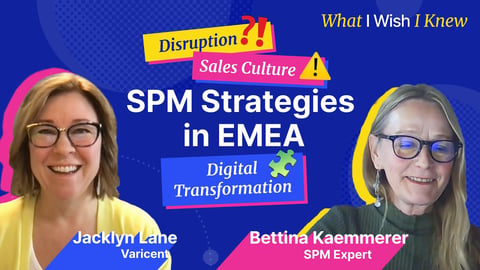What differentiates outstanding businesses is their ability to maximize the value of their customer relationships over the entire customer lifecycle. This approach helps companies maximize profitability, increase market share, and invest more in their products and services.
This investment can be significant. It can cover the billions of dollars some companies spend developing new features and capabilities that offer more value for their customers.
The sales and marketing function plays an important role in capitalizing on all the time, effort, and resources devoted to product development. The sales leadership team needs to ensure that the level of sales effectiveness applied throughout the customer lifecycle reflects what the business needs to justify all its investment in new products and services.
Let’s explore how that might work and understand how maximizing sales effectiveness is an essential part of a Go-To-Market strategy.
- The Customer Lifecycle
- How Do Companies Apply this Model in the Real World?
- Sales Management: Let Big Data Be Your Friend
- How Does This Insight Help Your Business?
- How Do You Best Build These Capabilities?
The Customer Lifecycle
The Customer Lifecycle Model is a useful way to understand how your relationship with a customer changes over time, reflecting the value you offer that customer and the profitability they provide you in return. This model is at the core of understanding how best to maximize sales effectiveness at every stage.
Early Stage
The early stage of the customer lifecycle focuses on building awareness amongst your target audience that you have a potential solution for their problems or can satisfy their needs in some way. This is where initiatives like digital branding campaigns come into play, for example, to encourage people to perceive your business in a positive and relevant light.
Much of the effort at this stage will be based on building brand awareness, which might include advertising, sponsorship deals, or posting generic advertisements on social media. An alternative approach might be to have a more targeted awareness campaign, using early-stage content – videos, infographics, whitepapers, or case studies – that ultimately drive traffic to your website.
The aim here is two-fold. Firstly, you want people to remember you so that when they have a problem or need, you’re front of mind; the first phone call or the first website visit should be to your business. Secondly, as you run your campaigns, there’ll be people interested at that moment, so having your message out in the market will be valuable.
Early-stage engagement is fundamentally about lead generation and conversion to opportunities once the leads have been appropriately qualified. It provides the first foundation stone to help you maximize your sales effectiveness. This stage can provide a ready source of sales effectiveness metrics for you to select and build your business on.
Middle Stage
While some may debate the crossover point from the early to middle stage, let’s assume that it’s when the customer has signed up or made a commitment to use your product. The focus here is ensuring that a customer is onboarded successfully so they can begin to recoup their investment in your products and services at the earliest opportunity.
Depending on the complexity of the product or service you offer, most customer onboarding experiences are quick, slick, and positive. That said, things can and do go wrong, which is where an effective customer success team comes in.
In complex enterprise sales situations, the success or failure of a customer’s investment will depend on how well it’s implemented, using a mix of consulting and technology expertise.
However simple or complex, your company will likely be keen to move through this phase at the earliest opportunity, as it takes up valuable resources and management time, reducing profit margins.
This middle stage is about maximizing the profitability of the relationship and beginning the process of cross-selling and upselling. These are at the core of lengthening the customer lifetime relationship. The need to maximize sales effectiveness is still vital, although you’ll likely use different strategies and tactics to achieve this compared with the early stage.
Late Stage
The late stage of the Customer Lifecycle Model marks the beginning of the end of a relationship between a business and its customer. This can happen for a range of positive reasons. Maybe your customer has grown to the point where another vendor better meets their needs. Or perhaps you’ve grown to the point where some customers are no longer part of your core market.
Customers in the late stage are typically offered the opportunity to migrate to a newer version of your product, perhaps at a discount. Alternatively, they can be put into ‘run off’ where they’re informed that their product will no longer be supported after a specified date. Focusing on your sales effectiveness even at this stage may offer you options to encourage customers to migrate to newer platforms. Equally, you may find there’s a business case for supporting customers for longer than the planned product end-of-life date.
How Do Companies Apply this Model in the Real World?
While there’s an appreciation of the customer lifecycle's significance, especially in the product development and marketing functions, it’s often considered less relevant from a sales perspective. The focus of a sales leadership team is to focus on the next 12 months and hitting a target. While the next sales year matters, this year is always ‘the most important year the business has ever faced.’
In fairness to sales managers, there’s always a great focus on lead generation, opportunity conversion, and ensuring there’s a sufficient pipeline for the sales year. From a sales effectiveness point of view, this is where most analysis is usually done, to understand the volume and quality of leads a sales team needs to hit quota this year.
Once a customer is signed up, there’ll be every effort by the account management team and the customer success team to encourage the uptake of their initial purchase, followed by plans that drive cross-selling and upselling initiatives within an account. This is typically done on an account-by-account basis. The thinking here is that the salespeople closest to an account are best placed to find where the new opportunities will be found within a customer.
Analytics in the late stage isn’t standard beyond finding ways to encourage a customer to migrate to an updated version of your offering.
While there’s often some analytics applied to the sales process, primarily in the early stage, there’s scope to enhance this analytics process across the whole customer lifecycle and enhance the sales effectiveness of the entire business.
The critical issue is that many sales managers rely heavily on their sales team's initiative, focus, and determination to drive quota achievement. Typical quota and commission models are designed to foster this behavior. While having a highly motivated sales team is essential to success, working with our customers, we find that applying a systematic data analytics model across all stages can yield valuable results by enhancing the sales effectiveness of a commercial team.
How can you do this? Let’s take a look.
Sales Management: Let Big Data Be Your Friend
Some organizations address this analysis challenge by expanding their sales operations teams to do more in-depth analytics or perhaps turning to their marketing colleagues for more insights.
But here’s another option to help improve sales effectiveness: Big data analytics.
Sales managers are blessed and challenged with an unparalleled array of data to help them navigate the complex variety of markets. This can cover information in their CRM systems, marketing systems, e-commerce systems, financial systems, and external market analytics data sources.
The challenge comes from capturing, consolidating, and analyzing all this data to make sense of trends and opportunities.
In the early stage, there are a host of metrics you might want to think about in developing your Go-To-Market plans.
Let’s look at some examples:
1. What is the Next Sector or Segment to Focus on?
One key to sales effectiveness is understanding what sectors will grow the fastest over the next 12-24 months. You’ll want to raise your profile in these sectors before investing significant sales time and effort. Select the right target sector or segment with the right data and insights.
2. How Well is Your Lead Generation and Conversion Process Working?
Beyond the traditional 3X opportunities to sales target measure, there are other measures you might want to consider. What’s the average lead to opportunity conversion timescale? Do these vary by sector, segment, or time of year? What’s the typical audience who engages with your business first? What function are they typically from, and from what level in the prospect’s company?
3. How Well is Your Sales Process Working?
You can also use your data to understand your typical sales process in more detail, from lead to qualified opportunity and to close. For example, what’s the average conversion time, and does it vary by sector or segment? How many people are typically involved in the decision-making process? How many meetings generally are involved? What compelling events or offers are most effective in closing transactions? How long do the different parts of the selling process – qualification, needs analysis, presentation, proof of concept, negotiation, and close - typically take, and what are the bottlenecks?
4. How Effective is Your Sales Team at Cross-selling and Upselling?
Once a customer is using your products, the next step is to think about cross-selling and upselling. How long do your customers typically take to use new product sets after their initial purchase? What sectors are the most likely to make use of some of your different products? Is having a customer success program a critical success factor?
These highlights merely scratch the surface of what you can find out, with the right tools, to improve your sales effectiveness.
How Does This Insight Help Your Business?
This level of insight can help sales managers develop a comprehensive sense of how their sales process works in near real-time, helping provide a better understanding of stress points and providing ideas for addressing them.
Perhaps more targeted lead generation campaigns are needed - with more investment in business development executives - to help better qualify opportunities. Perhaps reconfiguring a product might eliminate sales log jams. Perhaps a fully developed account management model, rather than a customer success program, is a better investment. There’s no right or wrong; simply what’ll work best for your business.
The process can also offer insights into who your best performers are at each stage of the sales process. This can help you better understand what blend of sales strategy, tactics, skills, and experience are most effective in enhancing your business.
You can use these insights to design sales territories that drive the best outcome for your business based on how your customers engage with you. You can also create sales quota and sales commission plans that set your sales team up for success.
How Do You Best Build These Capabilities?
These capabilities – typically referred to as revenue intelligence capabilities – are designed to help you capture, consolidate, and analyze your core business data to obtain insights that help manage your business more effectively.
Technology capabilities allow you to integrate a range of data sources – within your sales, marketing, and finance functions and from outside the business – and consolidate them to begin a data mining process that can produce results. AI capabilities can do the heavy lifting for you, or you can do your own research to find the themes and highlights that can take your business forward.
Powerful data presentation capabilities allow users to present, circulate, and review complex datasets that are easy to understand and visualize. Sales managers can review their options – regardless of where they work – and make decisions based on data and insight instead of hunches.
What’s Next?
Learn more with our eBook, The Guide to Improved Opportunity Management for B2B Sales Leaders to help you increase efficiencies within your teams and drive revenue growth.



